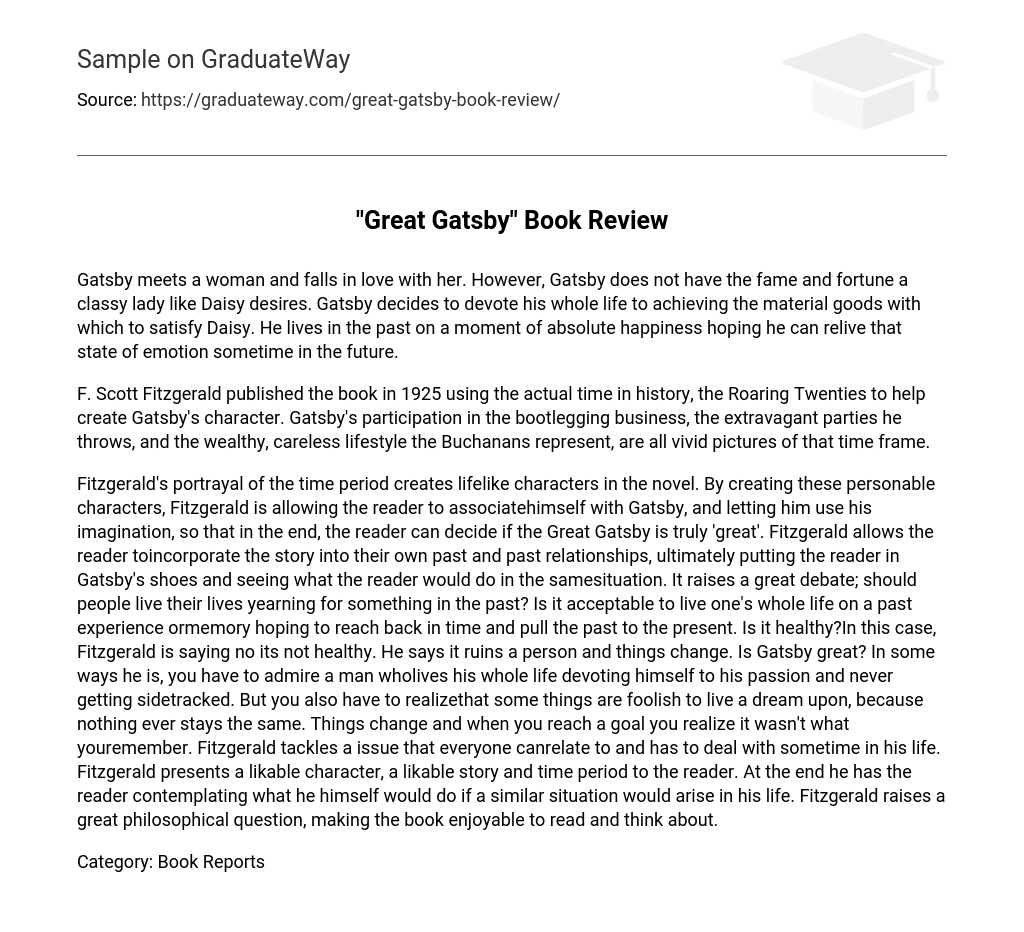Gatsby meets a woman and falls in love with her, despite his lack of wealth and prestige not meeting the standards of someone as elegant as Daisy. To satisfy Daisy’s desires, Gatsby devotes his entire life to acquiring the material possessions needed to make her happy. He fondly reminisces about a specific moment of immense joy from the past, hoping to recreate that same bliss in the future.
In 1925, F. Scott Fitzgerald utilized the historical period known as the Roaring Twenties to develop Gatsby’s character. This is evident in Gatsby’s involvement in the bootlegging industry, the extravagant parties he hosts, and the luxurious, carefree lifestyle exemplified by the Buchanans.
Fitzgerald’s portrayal of the time period in his novel creates realistic characters. These relatable characters allow readers to connect with Gatsby and use their imagination. Readers are left to determine whether they believe Gatsby is truly ‘great’. Fitzgerald enables readers to incorporate the story into their own experiences and relationships, putting themselves in Gatsby’s shoes. This prompts them to consider how they would handle a similar situation. The key question raised is whether it is acceptable for people to yearn for something in the past and base their lives on a memory. Fitzgerald argues that this is not healthy as things inevitably change over time, ultimately ruining a person. While Gatsby’s dedication to his passion without distraction may be admirable, it is important to recognize that some dreams are foolish to build one’s life upon because things never stay the same. Fitzgerald tackles an issue that everyone can relate to and will have to confront at some point in their lives.Fitzgerald’s book prompts readers to contemplate how they would handle a similar situation in their own lives by presenting likable characters, an engaging story, and a captivating time period. The enjoyment of reading and pondering Fitzgerald’s work stems from his presentation of a significant philosophical question.





